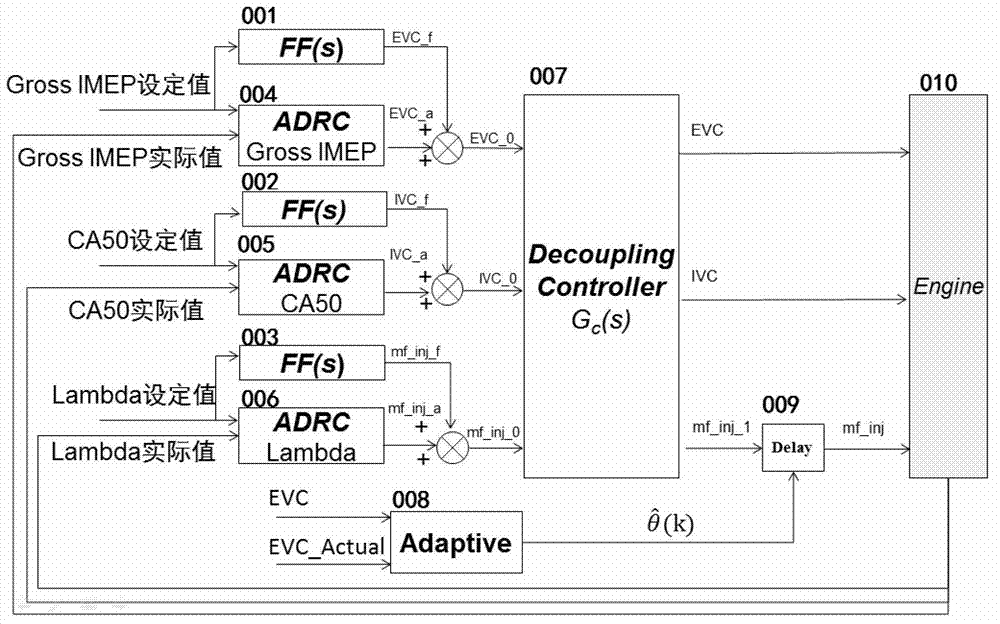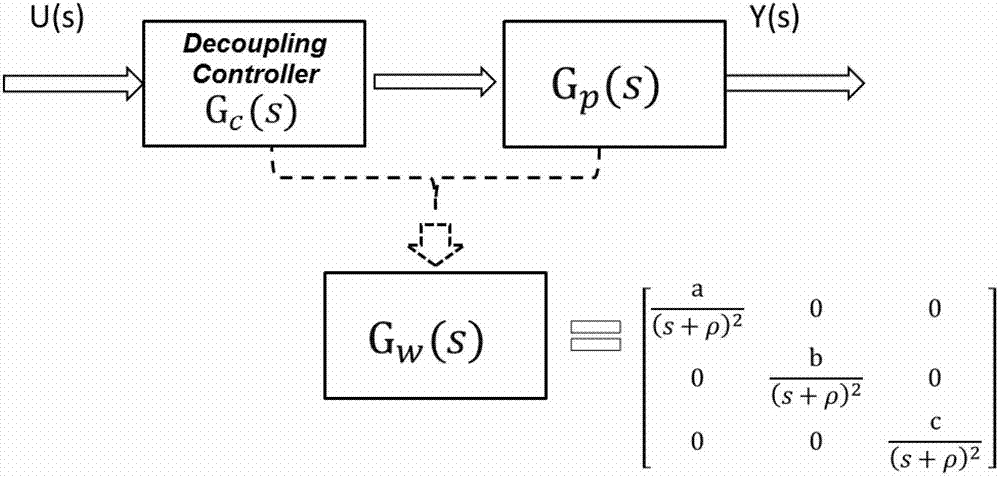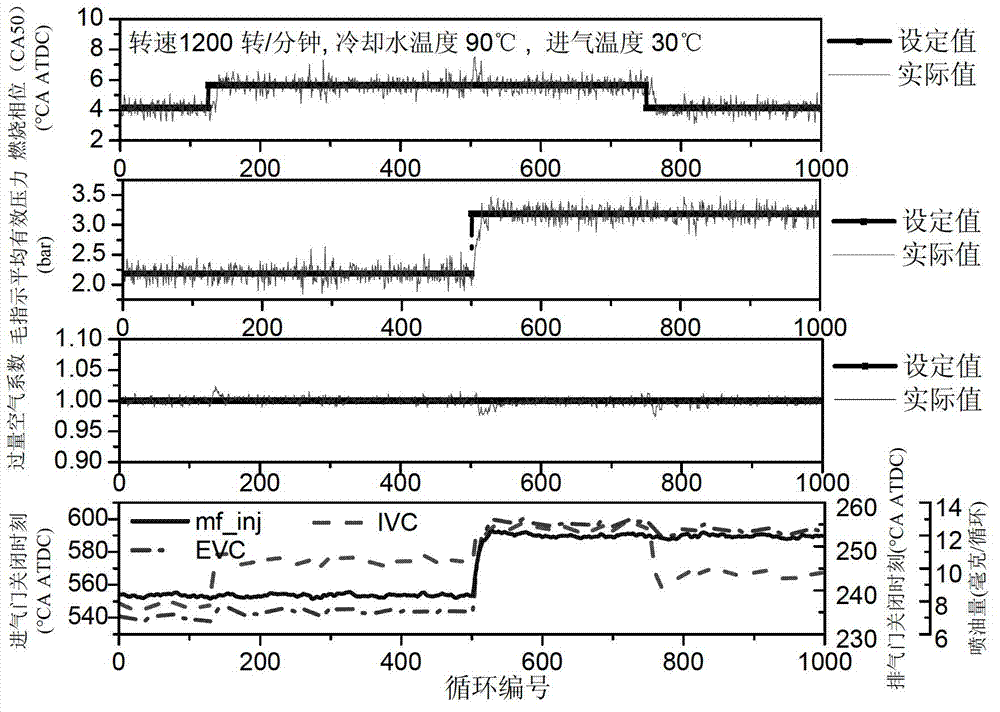A Model-Based Decoupling and Anti-disturbance Control Method for HCCI Combustion
A technology of decoupling control and control methods, applied in electrical control, engine control, machine/engine, etc., can solve problems such as cumbersome calculation of adaptive control, complex HCCI combustion process, and difficulty in accurate modeling
- Summary
- Abstract
- Description
- Claims
- Application Information
AI Technical Summary
Problems solved by technology
Method used
Image
Examples
Embodiment
[0098]Below, based on a simulation platform of a single-cylinder HCCI gasoline engine, the engine parameters thereof are as shown in Table 1, introducing the best embodiment of the present invention. For a more detailed description of the simulation platform, please refer to: Qin Jing, Xie Hui, Zhang Yan, Zhao Hua, "A Combustion Heat Release Correlation for CAI Combustion Simulation in 4-Stroke Gasoline Engines", SAE 2005-01-0183.
[0099] The specific implementation steps are detailed as follows:
[0100] Table 1: Engine parameters used in embodiments of the present invention
[0101] Cylinder diameter [mm] 86 stroke [mm] 86 Displacement [L] 0.5 compression ratio 10.66 combustion chamber Bonnet / 4 valves fuel injection method port injection fuel type No. 93 gasoline Intake pressure 1 bar Throttle Opening 100%
[0102] Step 1: Establishment of the control model of HCCI combustion:
[0103] like figure 1 Show...
PUM
 Login to View More
Login to View More Abstract
Description
Claims
Application Information
 Login to View More
Login to View More - R&D
- Intellectual Property
- Life Sciences
- Materials
- Tech Scout
- Unparalleled Data Quality
- Higher Quality Content
- 60% Fewer Hallucinations
Browse by: Latest US Patents, China's latest patents, Technical Efficacy Thesaurus, Application Domain, Technology Topic, Popular Technical Reports.
© 2025 PatSnap. All rights reserved.Legal|Privacy policy|Modern Slavery Act Transparency Statement|Sitemap|About US| Contact US: help@patsnap.com



